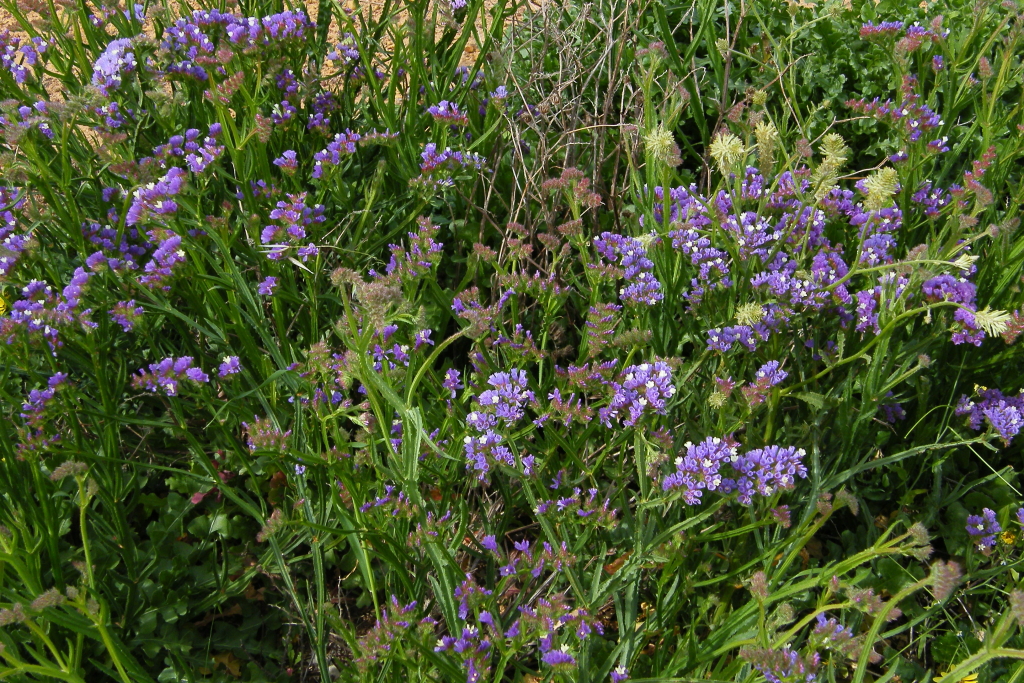Limonium companyonis
(Gren. & Billot) KuntzeGlabrous annual, or short-lived perennial with erect flowering stems 10–30 cm high. Leaves in 1–few rosettes at base, narrowly obovate to spathulate, 25–50 mm long, 5–10 mm wide, apex rounded or truncate, sometimes minutely apiculate, more or less recurved. Inflorescence c. ovate, with branches mostly simple, more or less distichous, ascending; spikelets mostly 2–3-flowered, more or less evenly arranged along the the distal 2–6 cm of branches; outer and middle bract ovate, scarious, c. 1 mm and 3 mm long respectively, inner bract elliptic, thickened but with membranous margins, c. 4 mm long; calyx c. 5 mm long, the tube c. 3 mm long, with short inclined hairs in the lower part, the limb 2.5–3.5 mm diam., mauve fading to white, the brownish midribs extending to the tips of the narrow, acute lobes; corolla lobes truncate, exceeding calyx, bright mauve-purple. Capsule 5-angled toward apex, irregulary dehiscent; seed fusiform, c. 2.5 mm long, reddish-brown. Flowers Mar.–Apr. (2 records).
MuM, VVP, MSB. Also naturalised WA, SA. Native to southern France and nearby islands. In Victoria, known only from saline ground in South Mildura where first noted around 1980.
The inland occurrence in Victoria of this normally coastal species is of interest. See also notes following Limonium hyblaeum.
Walsh, N.G. (1996). Plumbaginaceae. In: Walsh, N.G.; Entwisle, T.J., Flora of Victoria Vol. 3, Dicotyledons Winteraceae to Myrtaceae, pp. 296–299. Inkata Press, Melbourne.
 Spinning
Spinning



